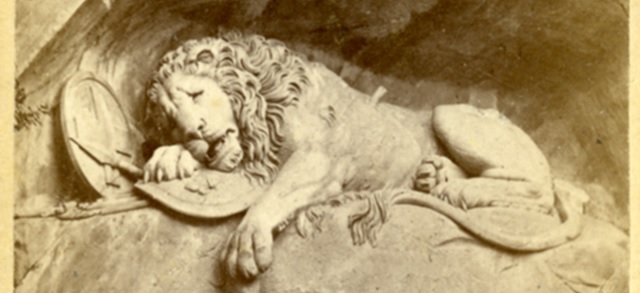
Monuments Class Projects
Architect/Sculptor of Monument
Hammet Billings (1818-1874)
Preview

Medium
photograph, carte-de-viste
Keywords
Plymouth Rock, Pilgrims, Mayflower, North America, Plymouth
Physical Dimensions
2 ¾ x 4”
Date of Publication
1867
Date of Publication
c. 1867-1900
Name of Monument
Canopy over Plymouth Rock
Date of Creation of Monument
1859
Date of Completion or Dedication of Monument
1867
City of Monument
Plymouth
Location within City
Pilgrim Memorial State Park
State/Province of Monument
Massachusetts
Country of Monument
United States
Description
The Canopy over Plymouth Rock honors the Pilgrims' landing at Plymouth after their voyage on the Mayflower in 1620. The canopy was built to protect and store half of the rock. According to tradition, settlers first set foot on this rock when they landed here at Plymouth. The canopy was built in 1867 and existed until 1920. When it was torn down and replaced with the existing canopy that holds both pieces of the original rock.
School of Art/Architecture
Baroque Revival
Publisher
W. S. Robbins
Digital Date
Spring 4-22-2025
File Format
image/jpeg



Comments
Background
The Plymouth Rock Canopy was located in Plymouth, Massachusetts. While many believe that Plymouth was the original place where the Mayflower arrived, it originally landed in Provincetown on Cape Cod. This monument highlights the location where the Pilgrims disembarked from the Mayflower at the site where they established their colony. This monument symbolizes the strength and determination of the early settlers. The Pilgrims came to North America hoping to start a new life, pursue their religion, and avoid the more tolerant lifestyle of Dutch society.
The Pilgrims first landed in Provincetown but found that Cape Cod lacked resources. They explored other areas to find a better land to begin a successful colony. They finally settled in Plymouth, Massachusetts, where they built their colony. Tradition states that they landed at Plymouth upon the large rock that is now known as the iconic Plymouth Rock.
Plymouth Rock is an erratic boulder that came to symbolize the determination, resilience, and aspirations of these settlers who made the journey to the New World. This canopy was designed to protect the historical rock at the location where the Pilgrims landed. In 1774, the rock was moved but was dropped and broken into two separate pieces. The upper part of the rock was moved to the Pilgrim Hall Museum in 1834, where it sat outside surrounded by an iron fence. The lower part of the rock was left untouched and later buried in the soil beneath the shoreline, and left forgotten during the construction of docks near the shoreline. It was left untouched for many years, making it almost unrecognizable when historians found it many years later. Other smaller pieces of rock that were broken off found their way into other museums, churches, and private collections. In 1859, the Pilgrim Society purchased the seabank where the second half of the rock lay. The Society then dug up the second half of the rock and built the Canopy over Plymouth Rock in 1867. This canopy was located on Plymouth's waterfront, where the rock had been buried.
The Pilgrim Society decided to create this enclosed structure to house the historical rock. The canopy was built to protect the bottom half of the rock from further erosion and damage that had been caused in the past by visitors. This monument was designed by Hammett Billings (1818-1874), an architect from Boston, Massachusetts. He designed the canopy in a Tuscan style with four scalloped shells that crown the top of the canopy. Since medieval times, scallop shells have been used as a symbol of the Catholic pilgrimage to Compostela, Spain. Here, these shells symbolize the Protestant Pilgrim heritage. Construction of the canopy was delayed due to the Civil War and was later completed in 1867, but it only contained the lower half of the rock.
In 1880, the upper piece was taken from Pilgrim Hall and reunited with the other half of the rock that had been enclosed in the canopy. During this time, visitors could sit on the rock when the gates of the canopy were open and touch it. In 1920, on the three-hundredth anniversary of the Pilgrims' arrival in the United States, members of the Pilgrim Society agreed that a larger canopy should be built so that both parts of the historic rock could be more easily seen. The original canopy, constructed in 1867, was demolished and thrown into the harbor nearby. The original four scallop shells were saved from the canopy and are now displayed in front of the Forefathers Monument located elsewhere in Plymouth. Even though the Canopy over Plymouth Rock is no longer standing, its delicate architecture and design honor the first Pilgrims and their arrival in Plymouth. Plymouth Rock remains a symbol of new lifestyles and opportunities for many making their journey to America.
Sources:
Klein, Christopher. “The Real Story behind Plymouth Rock.” History.Com, A&E Television Networks, 21 Nov. 2012
Pirie, Madsen. "The Mayflower and Plymouth Rock." Adam Smith Institute BlogNewstex, 2019. ProQuest
Browne, Patrick. “Fragments of the Plymouth Rock Canopy.” Historical Digression, 19 Dec. 2015
Loewen, James W. Lies Across America: What Our Historic Sites Get Wrong. New Press, 2019
Seelye, John. Memory’s Nation: The Place of Plymouth Rock. University of North Carolina Press, 1998.